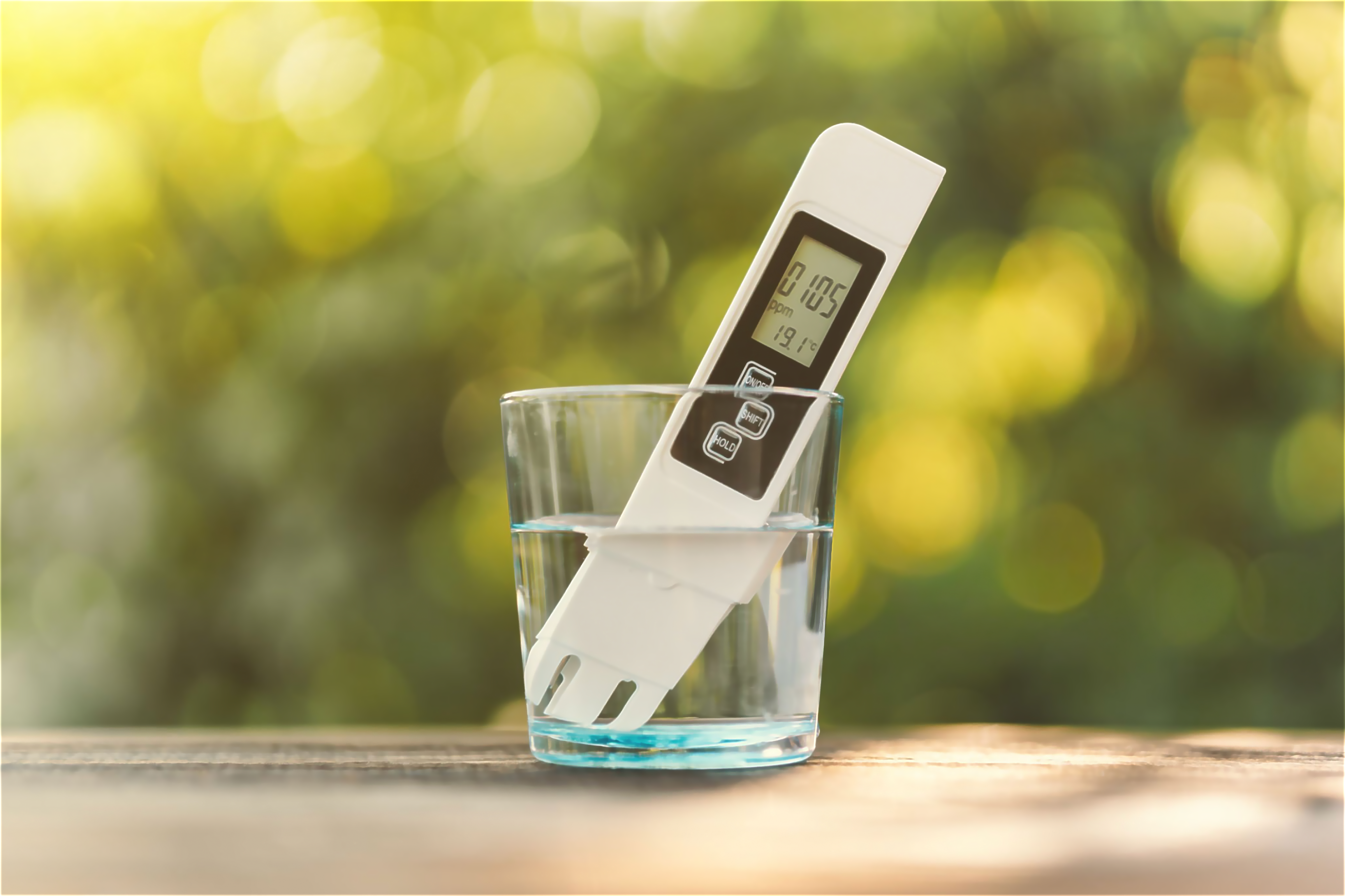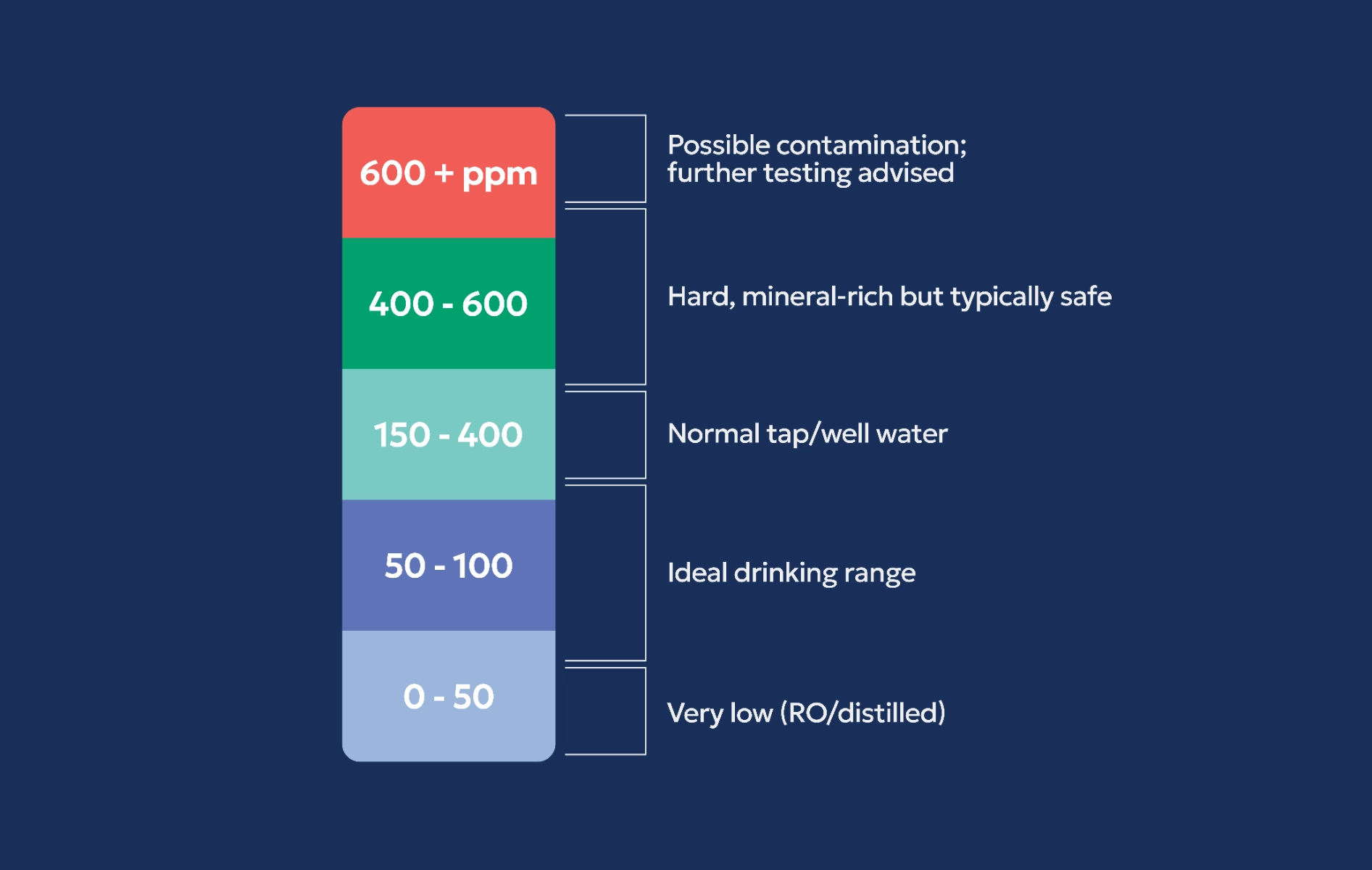What Is TDS and Does It Really Matter in Whole House Filtration?
If you’ve ever tested your tap water or read a filter label, you’ve likely come across the term TDS — Total Dissolved Solids. Some people panic when their reading looks high, while others ignore it. But what does it really mean? And should it matter when choosing a whole house filtration system?
TDS doesn’t measure dirt or contamination; it measures everything dissolved in your water — good and bad. Understanding this helps you choose the right system without chasing the wrong goal.
What Is TDS in Drinking Water?
TDS measures the combined amount of minerals, salts, and metals dissolved in water. These particles are so tiny that they pass through regular sediment filters.
Common examples of dissolved solids include:
• Natural minerals like calcium, magnesium, potassium, sodium;
• Trace metals such as iron, zinc, copper;
• Salts and ions from rocks and soil;
• Residues from fertilizers, plumbing, or treatment chemicals.
TDS is expressed in parts per million (ppm). Most U.S. homes fall between 100–400 ppm. The EPA recommends staying below 500 ppm for taste and appearance, but higher levels do not automatically mean unsafe water.
A high reading may simply indicate minerals. A low reading may still hide unwanted chemicals. TDS shows quantity, not quality.
Is High TDS Always Bad?
Not always.
A high TDS reading often points to hard water, which is full of calcium and magnesium. These minerals are healthy to drink, but they can cause limescale, soap scum, and dry skin — which is why many homeowners pair a softener with whole house filtration.
Low TDS, especially below 50 ppm, doesn’t guarantee purity. Reverse osmosis systems produce very low TDS water that may taste flat due to reduced minerals.
What matters is the composition:
• Beneficial minerals = fine
• Heavy metals, salts, chemicals = concerning
TDS measures the total weight — not whether it’s good or bad content. It’s like knowing your grocery bag is heavy without knowing what’s inside.
How Whole House Filtration Affects TDS
Whole house systems are designed to improve water quality, not reduce TDS. Expect little to no change in your TDS reading after installation.
Here’s what each stage actually does:
• Sediment filters remove sand, rust, silt — not dissolved solids
• Carbon block filters remove chlorine, chloramine, VOCs — not TDS
• KDF filters remove metals like lead or mercury — but overall TDS stays similar
A whole house filter protects your plumbing, appliances, and overall comfort. It is not meant to strip minerals from water.
When TDS Reduction Actually Matters
There are specific cases where TDS is important — usually not for whole house use.
Drinking and cooking water
Lower TDS tastes cleaner. Reverse osmosis removes up to 98% of dissolved solids and is ideal for drinking, coffee, and baby formula.
Aquariums and hydroponics
Fish and plants are sensitive to mineral levels. TDS affects balance and growth.
Lab, medical, or industrial applications
Some equipment needs ultra-pure water with very low TDS.
For whole house use
Zero TDS water can be corrosive to pipes and unpleasant to drink. That’s why many households choose a two-stage setup:
• Whole house filter for contaminants
• Under-sink RO for drinking water
This gives you balanced water throughout the home and pure water where it matters.
How to Test and Monitor TDS at Home
Testing TDS is simple and inexpensive.
Steps:
• Fill a clean glass with tap water
• Turn on the TDS meter and dip the probe
• Wait for the reading to stabilize
Understanding your results:
• 0–50 ppm: Very low (RO/distilled)
• 50–150 ppm: Ideal drinking range
• 150–400 ppm: Normal tap/well water
• 400–600 ppm: Hard, mineral-rich but typically safe
• 600+ ppm: Possible contamination; further testing advised
Sudden spikes or drops may indicate plumbing issues, municipal changes, or aging filters.
TDS is a monitoring tool, not a safety test.
The Bottom Line on TDS and Water Filtration
TDS is only one piece of the water quality puzzle. A higher TDS number may simply mean healthy minerals, while low TDS water can still contain unwanted chemicals.
Don’t focus on reaching zero. Focus on achieving water that suits your home and your health.
Filterway’s whole house filtration systems remove impurities that affect comfort and safety while preserving the natural qualities that make water taste fresh.
Healthy water isn’t about hitting zero — it’s about getting it right.













